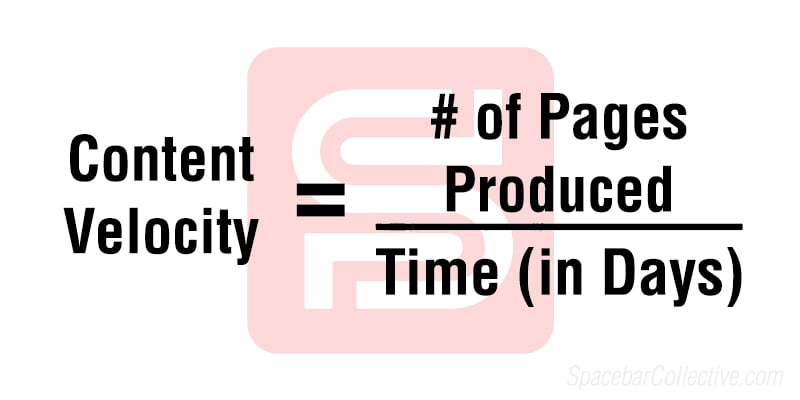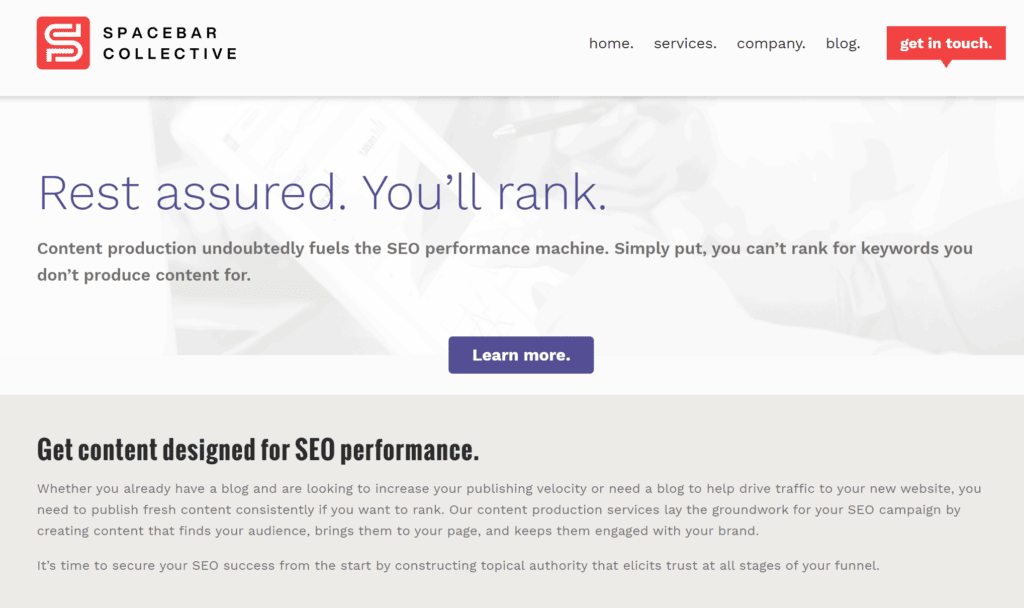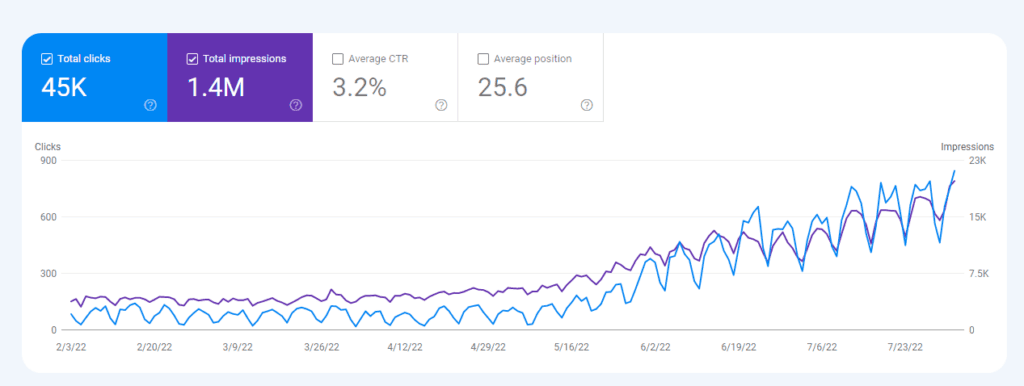Google and other search engines reward high-quality and valuable content. That will always be an SEO fundamental. However, it takes A LOT of TIME for content to gain traction organically.
With how competitive most industries are, time isn’t something we can spare. To keep up with competitors, we need content velocity at scale.
What is Content Velocity, and How Do We Measure It?
Content velocity is the volume of content you publish over a period of time. It can be measured weekly, monthly, or yearly—per word count, pages published, URLs, or blogs.
Measuring content velocity comes down to preference and what a business values most. Since we’re dealing with content velocity for SEO, we typically measure in terms of new pages.
We want to build topical authority through strategic content planning, not just word count. In short, focus on creating long-form content that makes sense for the topic and the readers.

How Fast Should Our Content Velocity Be?
There isn’t a universal benchmark for content velocity. We must consider factors such as our competitor’s content velocity, our own content library, and internal linking structure.
Let’s say your top competitor is publishing 50 articles over six months. That means they have a content velocity of 8.33. Ideally, you’d want to go beyond or match their content velocity.
But the amount of content published isn’t the only factor to consider in our overall SEO strategy. We still need to optimize our website for our content to be crawled, indexed and ranked faster.
The Importance of Content Velocity in SEO
For well-established sites with high authority, indexing can happen within hours after publishing a new page. For newer sites with no authority, backlinks, and a thin content library, it can take 3-6 months.
In a vacuum, data says that in a year, only 30% to 60% of your content can actually bring value to your business. But that’s the great thing about content velocity. The more quality content you produce, the more Google sees you as an expert.
Paired with the right link velocity strategy and solid SEO fundamentals, indexing time for new pages gets gut down significantly. So, how exactly do we scale our content velocity in such competitive markets?
How to Scale Content Velocity
If a site is optimized for SEO, all that’s left to do is to scale content production to match competitors’ content velocity. Here are five strategies that help you do just that.
Outsourcing Blog Writing
Blogs are the cornerstone for achieving content velocity. Remember, we want to achieve topical authority—blogs are the best way to do so.
Let’s say you’re a local contractor aiming to rank for “vinyl siding installation.” You could write the blogs yourself. But that would take hours of your day.
That’s time you could’ve used doing dollar-productive tasks. To save time and resources, you could outsource blog writing.
It removes the risks involved in keyword planning and content production (pitfalls such as keyword cannibalism), streamlines content planning and editing, and saves time and overhead (training costs, onboarding, etc.).
Plus, you can scale your content production based on your available marketing budget, allowing for a more flexible SEO campaign than locked-in, quota-based in-house marketing.

Creating an SEO Content Plan
If you want to keep blog writing or content production in-house, you must develop a solid SEO content plan. This involves:
- Audience and competitor research
- Keyword planning
- Creating topic clusters (topical maps or keyword silos)
- Establishing a content plan template
- Creating a content calendar
Create your SEO content plan with clear goals in mind. This helps align your content plan to your content calendar, set benchmarks, and identify key metrics.
After executing your content plan, be sure to monitor your campaigns and update them regularly. It’s not a one-and-done deal. Content production will always be an ongoing process.
Leverage Content Writing Tools
Since we are talking about content velocity, it’s only natural to use tools for streamlining content creation—and we’re not talking about ChatGPT. It was exciting at first, but AI detection tools are catching up faster than you can write prompts.
Letting AI write entire blogs is possible, but it’s not the best idea. Instead, we can use it for creating content outlines, templates, or keyword clustering. Aside from ChatGPT, we can use the following content writing tools to help us write better content faster:
- Grammarly: Grammar and spellchecker, eliminates typos, offers suggestions, and detects plagiarism.
- Hemingway: Online writing assistant. Helps you create succinct, persuasive, and easy-to-read sentences.
- Yoast SEO: WordPress plugin for optimizing SEO content. Helps reduce the risk of keyword cannibalization, highlights passive voices in sentences, and offers suggestions.
Front Load Initial Content Campaigns
Content takes time to mature and see organic growth. Front loading means publishing more volume during the initial campaigns, then sparingly once the initial blogs mature.
Here’s an example of that at play. I started creating content for this site in March of 2022. It had a thin content library, so I used the frontloading strategy and published 4-5 articles weekly.
After all the optimizations, such as a robust internal linking structure, Schema markups, and
It took about three months for the blogs to get indexed. Once they did, I lowered the volume to 2 weekly articles to avoid keyword cannibalization and still saw consistent growth.

Repurposing Content
If you’re front-loading content, you’d have to find a way to fill content gaps in your other channels/platforms. That’s where content repurposing strategies come in.
For example, a 2,000-word article can be chopped down to highlight certain topics you can repurpose as a Twitter thread, a short YouTube video, or an infographic.
It helps accelerate maturing long-form content, build lead magnets on various platforms, and engage your community.
Key Takeaways
Keeping up with the competition means matching or going beyond their content velocity or the content volume produced over time. To scale content velocity, you can leverage strategies like:
- Outsourcing blog writing
- Developing an SEO content plan
- Utilizing content writing tools
- Front-loading content
- Repurposing content for other platforms






